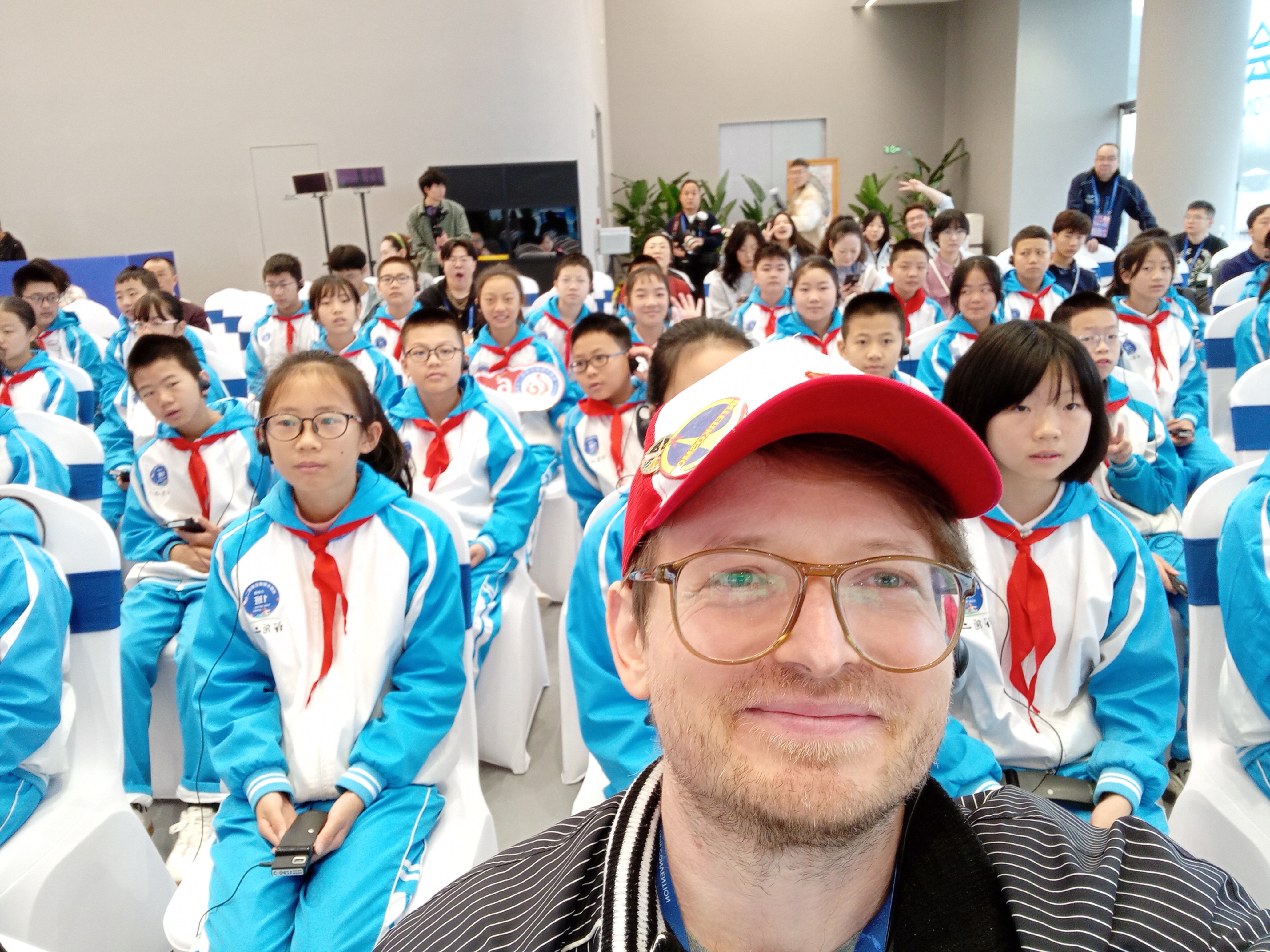SFitze Chengdu issue 11 2023 part 5
-newSFplatter by ST-
LUNAR BASES, RED MOONS AND SF EXHIBITIONS
There is much to be said (maybe in a future installment) of the numerous booths (the Chinese Space Agency and Chinese Space Station -themed one was wow + all the future space settlements dioramas, hydroponics and Moon globes as well as plans for future moonbases. All felt very touchable and physical not just some pipe dreams.
Much to be said about the dedicated exhibits and chronologies of Chinese and global SF at the Worldcon in the Sheraton hallways. These merit an article in themselves - and this still does not cover the SFW Infinity show (which I sadly missed!) that also included a diorama with desk from the early days of SFW, if I got that right.
That being said, there are very big risks involved in such a unanimous big-scale celebration of SF, all of which are public knowledge.
CAUTIONARY TALES OF ARCHITECHTURAL ZONING
I felt I have always learned a lot from friends involved in convention organizing, be they from Romania, Davos Switzerland or Houston, Texas. In an event-based impermanent world of boom & bust, during the strains of the attention-less economy, it is very important to protect from and avoid the blowback and flexplotational pull of mega-events and prestige projects. Here I have my own doubts about how Patrik Schumacher the principal architect at Zaha Hadid Architects cares or not about SF, but what remains clear is that after the global financial crisis in 2008, he turned towards the works of Murray Rothbad and von Mises. Like Quinn Slobodian details in Crack-up Capitalism, Schumacher laid out an anarcho-capitalist vision at the World Architectural Congress “arguing that governments should abolish all social and affordable housing, eliminate all housing standards, and privatize all streets, squares, public spaces, and parks”. Maybe I am overly sensitive to these things, coming from a “shock therapy” exposed country, so I might be forgiven for raising here these warning signs. While we love to get all the attention we can get for the things we truly think merit our full support, we also have to try and avoid the complete commercialization and deregulation of what we love and care for. Amidst laser-eyed pandas, increased media attention and VIP invitation-only exclusive events, let us keep an eye on the grassroots communities and their enduring initiatives that kept the flame going for all these years. Partly this is a pledoyer for a sophisticated but not an elitist SF, on that would see the value of staying popular without decoupling from its sources nor loosing its mass appeal.
This is even more essential now, in an age of blockbusters, micro-targetting, geopolitical tremors, rampant Hollywoodization, military-industrial-entertainment fusions, asset bubbles (as Michael Pettis mentions in his thread), real estate speculation on the Moon (or Pidu), and extractive industries on the Asteroid Belt in the Expanse series and elsewhere.
FULL STEAM AHEAD
Of course, the important thing is that the Chengdu experience was oriented only partially at us foreigners, and more towards its local citizens and visitors from all over China, including its own schools and the bustling cities to the east and south. The educative impact of SF should be never neglected and here I think lies the strength of STEM and hard SF – but a humanistic approach should not be excluded(so rather STEAM than pure STEM).
A truly essential element was having all these school kids all around – whom I will remember with great admiration. Entire classes at the panels and going through the Time Tunnel galactic exhibit or standing inside curved screens and projections of the solar system. My experience as a teen watching Carl Sagan's Cosmos series during the 1980s on B&W National Romanian TV and dreaming about his Spaceship of Imagination pales in comparison.
One can barely imagine how these kids will grow up or remember such (very normal for them) experiences. Actually, I am pretty sure, from the guardians to the kids themselves, everyone will remember this Worldcon.
HORTICULTURAL LABOUR
Big, big appreciation then to the entire staff of volunteers (particularly Li Lingfan, or to 汪妍 who helped from the airport on and offered much support), but also to bus drivers, chefs, janitors, tea masters, engineers, designers, taxi drivers, electricians, simple passerby, tour guides and everyone involved in making it real! Good to remember that everywhere we looked there was the invisible hand of horticultural workers and sustained efforts that keep this city and its green areas replenished and growing. This is one of the most underrated aspects of China’s global pre-eminence in many areas, including scientific research, its singular and unprecedented greening and plantational efforts.
Yes, the Plantatiocene is part of the Capitalocenic troubles, and rewilding is still a troubled concept, but there is a lot to be said about a concerted effort at greening and employment in this sector in the hope of improving the lives of future larger and larger urban populations, not to mention offering a more decelerated, more humane and less harrowing and toxic ways of living for the remaining of 21st century.
Infinite moebius ribbons to all Chinese SF fans wherever they are!
Finally, many thanks again to Zixuan(子旋) for his deeply appreciated suggestions/corrections in completion to this text and for reading it in an unredacted form, but I'm solely responsible for the final version.
check part 1, part 2, part 3, part 4 of this lengthy Chengdu report.








